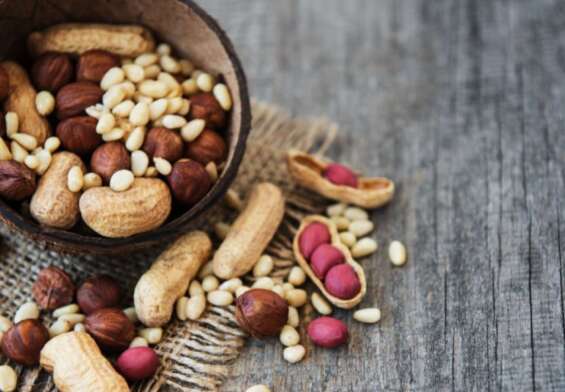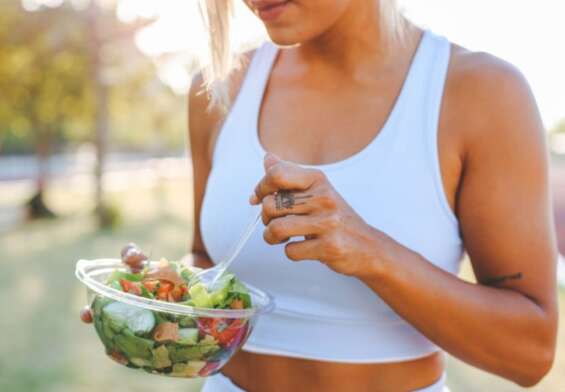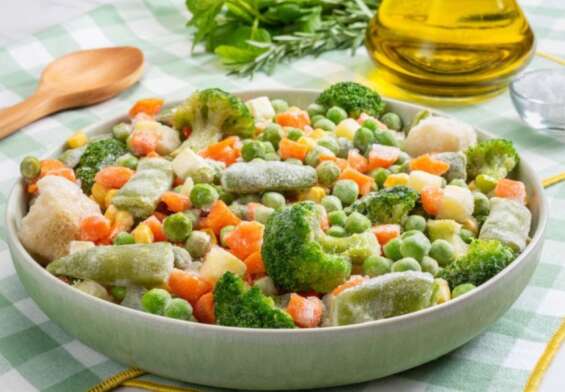
Eco Atkins Diet: How to Follow a Low-Carb Vegan Diet
The Eco Atkins Diet is a low-carb, high-protein diet that is designed to reduce the risk of developing chronic diseases such as heart disease, diabetes, and cancer. Unlike other low-carb diets, the Eco Atkins Diet emphasizes plant-based proteins such as legumes, nuts, and soy products, while limiting the intake of animal proteins. The diet is rich in fiber, antioxidants, and omega-3 fatty acids, which help reduce inflammation and may reduce the risk of chronic diseases. This diet is also rich in minerals, vitamins, and other essential nutrients, making it a healthy, balanced diet.
What Is the Eco Atkins Diet and How Does It Benefit You?
The Eco Atkins diet is a low-carbohydrate, high-protein diet that has been gaining popularity in recent years. It’s designed to be a more sustainable and environmentally friendly version of the Atkins diet.
The diet works by replacing some of the animal proteins with plant-based proteins. Instead of eating steaks, burgers, and other high-fat animal proteins, the Eco Atkins diet encourages you to eat plant-based proteins such as beans, nuts, and tofu. This way, you get all the benefits of a high-protein diet without the environmental harm associated with animal agriculture.
So, how does the Eco Atkins diet benefit you? Well, it can help you lose weight and lower your risk of heart disease and other health problems. Many studies have shown that high-protein diets can help reduce body fat and improve insulin sensitivity. Plus, you get the added benefit of being more sustainable and environmentally friendly.
So, if you’re looking for an eco-friendly way to get healthy and lose weight, the Eco Atkins diet may be just what you’re looking for!
Exploring the Health Benefits of the Eco Atkins Diet
The Eco Atkins diet has been gaining attention in recent years as an alternative to the traditional Atkins diet. But what exactly is the Eco Atkins diet, and why should you consider trying it?
Let’s start with what it is. The Eco Atkins diet is a low-carb, high-protein vegetarian diet. It consists of plant-based sources of protein, such as soy, nuts, and legumes, as well as healthy fats like olive oil and avocado.
Now, let’s get to why you should try it. The Eco Atkins diet has a multitude of potential health benefits. Studies have suggested that this diet may help reduce cholesterol and improve heart health, as well as aid in weight loss. Additionally, it may also help reduce inflammation and improve blood sugar levels.
So, if you’re looking for an interesting way to get healthier, look no further than the Eco Atkins diet. The combination of healthy fats, plant-based proteins, and complex carbohydrates makes it an ideal diet for those looking to improve their health and reach their fitness goals. Plus, it’s an enjoyable way to eat—who doesn’t love a good avocado toast?
So, what are you waiting for? Give the Eco Atkins diet a try and reap the health benefits it has to offer!
What Foods Are Included in a Typical Eco Atkins Diet?
The Eco Atkins Diet is the perfect way to eat for those who are looking for a way to get their environmental and health-conscious needs met. Here are some of the delicious foods that are included in the Eco Atkins Diet:
- Veggies: From kale and spinach to broccoli and cauliflower, the Eco Atkins Diet is full of fresh veggies that will provide you with all the essential nutrients you need.
- Legumes: Legumes are a great source of protein and fiber, and they’re also full of antioxidants. Think lentils, beans, and peas.
- Nuts and Seeds: Nuts and seeds like almonds, walnuts, chia seeds, and flax seeds are full of healthy fats and provide a great source of energy.
- Fruits: Fruits like apples, pears, and oranges are great sources of vitamins and minerals.
- Whole Grains: Whole grains like quinoa and oats are packed with fiber and nutrients, making them a great addition to the Eco Atkins Diet.
- Soy Products: Soy products like tofu and tempeh are full of protein, making them a great addition to the Eco Atkins Diet.
So there you have it! The Eco Atkins Diet is a great way to get your environmental and health-conscious needs met while still enjoying delicious and nutritious food. Give it a try and see for yourself!
How to Incorporate the Eco Atkins Diet Into Your Everyday Lifestyle
Are you ready to jump on the Eco Atkins Diet bandwagon? With its high fat and protein and low carb content, the Eco Atkins Diet is gaining in popularity, and it could be the perfect fit for your lifestyle. If you’re looking for a way to incorporate this diet into your everyday life, then look no further! Here’s a humorous guide to help you get started.
First, you’ll need to stock up on the right foods. Think of it as a shopping list for your Eco Atkins Diet. This should include plenty of plant-based proteins, such as tofu, nuts, and seeds. You’ll also need to make sure you have some healthy fats, such as avocados, olive oil, and coconut oil. And don’t forget to pick up some plant-based carbs, like whole grains and legumes.
Next, you’ll want to get creative with your meals and snacks. You can easily make delicious Eco Atkins-friendly meals with some of the foods on the list above. For breakfast, try a tofu scramble with avocado and spinach. For lunch, why not make a tasty quinoa salad with nuts and seeds? And for dinner, how about some black bean and sweet potato tacos?
Finally, you’ll want to make sure you’re staying hydrated throughout the day. Water is key for keeping your body healthy and energized. And don’t forget to treat yourself every now and then. Just because you’re eating healthier doesn’t mean you can’t indulge in a sweet treat every once in a while.
See? Incorporating the Eco Atkins Diet into your everyday lifestyle doesn’t have to be difficult. Just remember to stock up on the right foods, get creative with your meals and snacks, and stay hydrated. Then you’ll be well on your way to living an Eco Atkins-approved lifestyle.
Tips for Making the Eco Atkins Diet Easier to Follow
- Take a “Meatless Monday” Pledge: By taking the Meatless Monday pledge, you can easily commit to eating an Eco Atkins meal once a week. Plus, you get the added bonus of knowing you’re doing your part for the planet.
- Stock Up on Nuts and Seeds: Nuts and seeds are a cornerstone of the Eco Atkins diet. Keep a variety of them on hands, such as walnuts, almonds, chia, and flaxseeds, to make it easier to whip up a meal without having to run to the store.
- Keep Healthy Whole Grains on Hand: Whole grains are also a key part of the Eco Atkins diet, so make sure to have some healthy grains like quinoa, brown rice, and buckwheat on hand at all times.
- Get Creative with Meat Alternatives: To make it easier to follow the Eco Atkins diet, get creative with meat alternatives such as tempeh, seitan, and tofu. You can find a variety of recipes that use these ingredients to make delicious dishes.
- Don’t Forget the Leafy Greens: Leafy greens are a great source of plant-based protein, so make sure to include them in your meals. Spinach, kale, and collard greens are all great options.
- Have Some Fun with Healthy Fats: Healthy fats are an important part of the Eco Atkins diet, so experiment with different fats like olive oil, avocados, and nut butter. They add flavor and help your body absorb vitamins and minerals.
- Make it Social: Get your friends and family involved by hosting an Eco Atkins dinner party. You can share recipes, swap tips, and enjoy delicious plant-based meals together!
Meal Planning for the Eco Atkins Diet
Are you ready to try out the Eco Atkins Diet? Well, you’ll definitely need to do some meal planning before you do! Here are some tips to get you started on this eco-friendly, low-carb diet.
First of all, the Eco Atkins Diet focuses on plant-based proteins, so you’ll want to make sure that the majority of your diet is composed of those. That means loading up on legumes, nuts, seeds, and whole grains. To make sure you get enough protein, try to include at least one serving of these foods in every meal.
When it comes to fats, you’ll want to get them from healthy sources, such as avocados, nuts, and oils. You’ll also want to stay away from processed foods and cut down on your sugar intake.
For variety, you can mix up your meals by adding different vegetables, fruits, and spices. If you’re missing your favorite dishes, try making vegan or vegetarian versions. For example, if you’re craving pizza, try making a vegan version with a cauliflower crust.
Finally, don’t forget to stay hydrated. Drink plenty of water and add in some herbal teas if you want a bit of flavor.
There you have it! With a bit of planning and creativity, you can easily stick to the Eco Atkins Diet and enjoy all the health benefits that come with it. Bon Appétit!
Understanding the Pros and Cons of the Eco Atkins Diet
What do you get when you combine environmental sustainability and the Atkins diet? You get the Eco Atkins diet! This diet is a vegetarian version of the popular Atkins diet and has been getting a lot of attention lately as a way to lose weight while being environmentally friendly. But before jumping into this diet, it’s important to understand the pros and cons of it.
The Pros
- Weight Loss: The Eco Atkins diet has been shown to result in weight loss, similar to the traditional Atkins diet.
- Environmentally Friendly: The Eco Atkins diet is primarily comprised of plant-based foods, which are much more sustainable than animal-based foods.
- Easy to Follow: The Eco Atkins diet is relatively easy to follow and maintain.
The Cons
- Lack of Variety: The Eco Atkins diet may be lacking in variety, as it is mainly composed of plant-based foods.
- Potential Nutrient Deficiencies: The Eco Atkins diet may lead to nutrient deficiencies, as it eliminates many animal-based foods that are high in certain vitamins and minerals.
- Possible Health Risks: The Eco Atkins diet has the potential to cause health risks, especially if it is followed for an extended period of time.
So there you have it, the pros and cons of the Eco Atkins diet. While it may be a great way to lose weight and be environmentally friendly, it’s important to understand the potential risks before jumping into it.
Incorporating Exercise Into an Eco Atkins Diet Regimen
Ready to take your Eco Atkins diet to the next level? If you’re looking to get the most out of your plant-based diet and stay in shape, incorporating exercise into your daily routine is a must. Don’t worry—you don’t have to go full-on CrossFit warrior to reap the benefits. Here are a few fun ways to get your sweat on while maintaining your Eco Atkins diet.
Yoga: Who says yoga isn’t a good workout? This low-impact exercise still gets the heart rate up and strengthens your core and muscles. Plus, it’s easy to incorporate into your daily routine. Try doing a few sun salutations before you make your morning smoothie.
Dancing: Put on your favorite tunes and get your groove on! Whether you’re practicing salsa or taking a twerk class, dancing is a great way to stay active. Plus, it’s fun and who doesn’t like a good dance break from time to time?
Walking: One of the best ways to get active is simply to go for a walk. Put on your favorite podcast and take a stroll around the block or head to the park. The fresh air and movement are great for your physical and mental health.
Swimming: If you’re looking for a low-impact workout that still gets you sweating, swimming is the perfect way to go. You’ll get a full-body workout without putting too much strain on your joints.
Cycling: If you’re looking for a fun way to get around, cycling is the perfect way to go. It’s an eco-friendly way to get active, and it’s great for your heart and lungs.
So there you have it—a few fun ways to incorporate exercise into your Eco Atkins diet. Don’t forget to stay hydrated and make sure to eat plenty of plant-based proteins and fats to stay energized!
The Impact of the Eco Atkins Diet on Cholesterol Levels
Have you ever wanted to lower your cholesterol levels without giving up your favorite foods? Well, the Eco Atkins diet may be the answer you’ve been looking for. This diet has been scientifically proven to reduce cholesterol levels – and even better, it doesn’t involve having to give up your beloved carbs!
The Eco Atkins diet is a vegan-friendly, high-fiber, low-fat diet that focuses on plant proteins. It consists of 30% protein, 45% carbohydrates, and 25% fat. The proteins come from sources like nuts, seeds, legumes, and tofu, while the carbohydrates come from whole grains and vegetables. The fats come mostly from nuts, seeds, and avocados.
So, what kind of impact does the Eco Atkins diet have on cholesterol levels? Studies have shown that following the diet for four weeks can reduce cholesterol levels by up to 25%. This is a significant reduction and could have a positive effect on your overall health.
But don’t take our word for it – the best way to experience the results of the Eco Atkins diet is to try it for yourself! Who knows, you might even find yourself enjoying the delicious plant-based meals that come with them. So, why not give it a try and see how it impacts your cholesterol levels? You may be pleasantly surprised!
How to Transition to the Eco Atkins Diet
Ready to transition to the Eco Atkins diet? We won’t sugarcoat it – it’s a big change! But don’t worry, we’re here to help! Here are our top tips for transitioning to the Eco Atkins diet with a little bit of humor.
- Stock up on plant proteins. You’ll need lots of plant proteins to keep you going on the Eco Atkins diet, so make sure to stock your kitchen with plenty of beans, lentils, nuts, and seeds.
- Say goodbye to animal products. You won’t be eating any animal products on the Eco Atkins diet, so it’s time to bid farewell to chicken, beef, and fish. Don’t worry, you can still enjoy your favorite flavors – just make sure to use plant-based alternatives.
- Get creative with your recipes. Now is the time to get creative in the kitchen! Try out new vegan recipes, or whip up some veggie burgers for a delicious and nutritious meal.
- Have fun with your new diet. Transitioning to the Eco Atkins diet can be exciting, so don’t be afraid to have a little fun with it! Try out some new vegan restaurants, or find new ways to make the dishes you already love even more delicious.
With a few simple steps, you’ll be well on your way to transitioning to the Eco Atkins diet. Good luck and happy eating!
Exploring the Latest Research on the Eco Atkins Diet
If you’re looking for a way to slim down and be eco-friendly at the same time, then maybe the Eco Atkins Diet is for you! This diet – dubbed “the green Atkins” – emphasizes plant-based proteins and limits animal products.
The Eco Atkins Diet was created by Dr. David Jenkins, a professor at the University of Toronto, as a way to reduce the environmental impact of a traditional Atkins Diet. It follows the same structure as the Atkins Diet; however, it allows up to 30% of total carbohydrate intake to be derived from plant-based sources. This means that you get to enjoy things like legumes, nuts, and whole grains without feeling deprived.
So, what does the research say about the Eco Atkins Diet? A study conducted in 2008 found that participants on the Eco Atkins Diet lost more weight and had lower levels of cholesterol than those on a traditional low-fat diet. Another study from 2009 showed that the Eco Atkins Diet was associated with a reduction in LDL (the “bad” cholesterol) and an increase in HDL (the “good” cholesterol).
But that’s not all – the Eco Atkins Diet has some other benefits too. It has been linked to improved heart health, reduced risk of diabetes, and better blood sugar control. Plus, it’s a great way to reduce your carbon footprint, since it limits your consumption of animal products.
So, if you’re looking to shed a few pounds while helping the environment, the Eco Atkins Diet might be just the ticket! But don’t forget to consult with your doctor before starting any new diet.
Conclusion
The Eco Atkins Diet is an effective way to reduce the risk of lifestyle-related diseases such as heart disease, diabetes, and obesity. Not only does it provide adequate nutrition, but it also reduces the risk of environmental damage caused by intensive animal farming. It is a great solution for those looking to improve their overall health and reduce their environmental impact.











